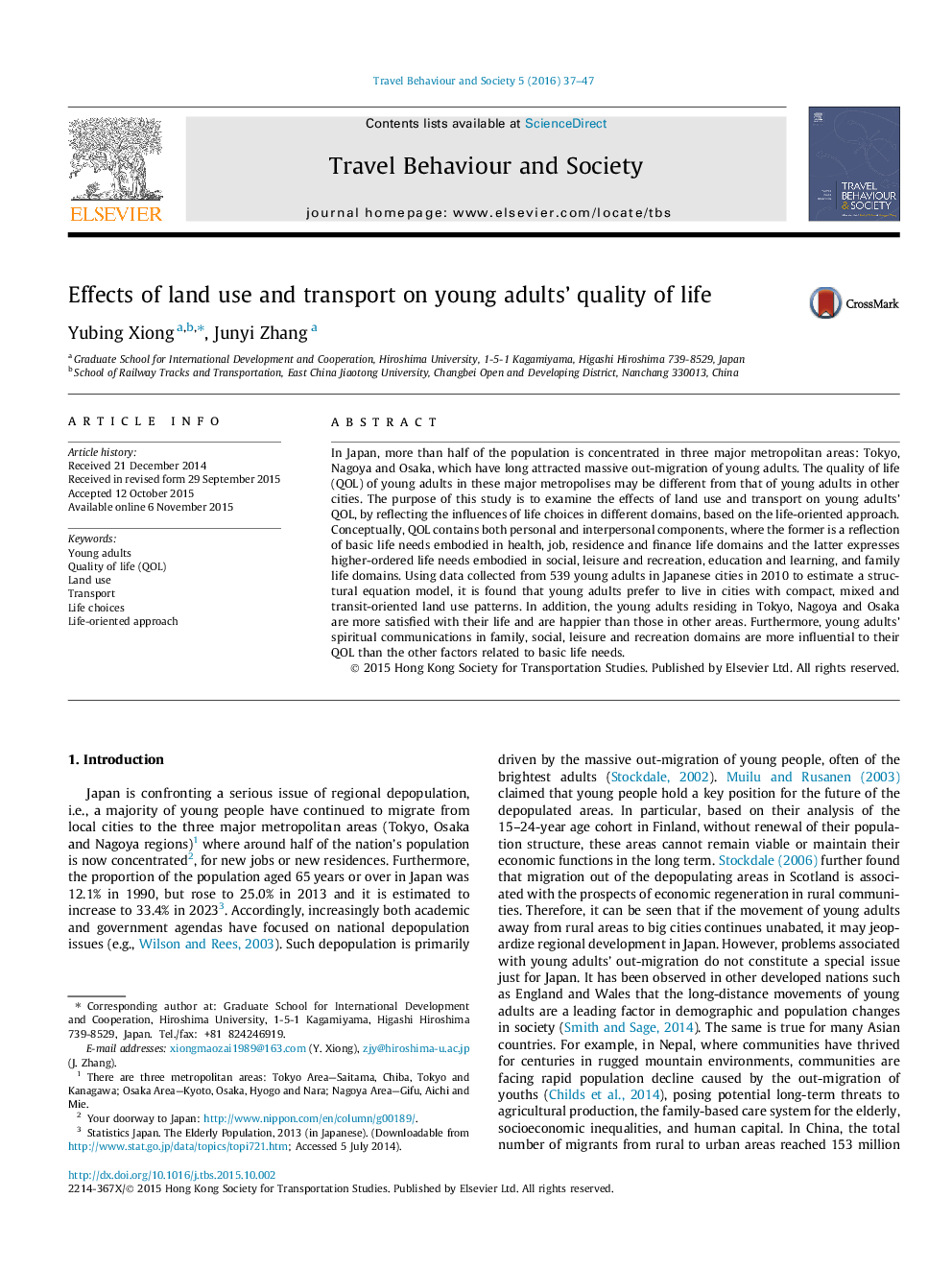| کد مقاله | کد نشریه | سال انتشار | مقاله انگلیسی | نسخه تمام متن |
|---|---|---|---|---|
| 141287 | 162849 | 2016 | 11 صفحه PDF | دانلود رایگان |
• Young adults’ lives are captured in a comprehensive way.
• The analysis is based on the life-oriented approach.
• Young adults prefer compact, mixed and transit-oriented land use patterns.
• Young adults are more satisfied/happier in the metropolitan regions.
• Young adults’ spiritual communications are more influential to the quality of life.
In Japan, more than half of the population is concentrated in three major metropolitan areas: Tokyo, Nagoya and Osaka, which have long attracted massive out-migration of young adults. The quality of life (QOL) of young adults in these major metropolises may be different from that of young adults in other cities. The purpose of this study is to examine the effects of land use and transport on young adults’ QOL, by reflecting the influences of life choices in different domains, based on the life-oriented approach. Conceptually, QOL contains both personal and interpersonal components, where the former is a reflection of basic life needs embodied in health, job, residence and finance life domains and the latter expresses higher-ordered life needs embodied in social, leisure and recreation, education and learning, and family life domains. Using data collected from 539 young adults in Japanese cities in 2010 to estimate a structural equation model, it is found that young adults prefer to live in cities with compact, mixed and transit-oriented land use patterns. In addition, the young adults residing in Tokyo, Nagoya and Osaka are more satisfied with their life and are happier than those in other areas. Furthermore, young adults’ spiritual communications in family, social, leisure and recreation domains are more influential to their QOL than the other factors related to basic life needs.
Journal: Travel Behaviour and Society - Volume 5, September 2016, Pages 37–47
